SRAM Code RSC Disc Brake
| Where To Buy | |||
|---|---|---|---|
Free shipping on orders over $50 (continental U.S. only).
International shipping available. Some exclusions apply. |
Free shipping on orders over $50 (continental U.S. only).
International shipping available. Some exclusions apply. $184.99
|
||
Free shipping on orders over $50 (continental U.S. only).
International shipping available. Some exclusions apply. |
Free shipping on orders over $50 (continental U.S. only).
International shipping available. Some exclusions apply. $264.00
|
||
SRAM Code RSC Disc Brake
$264.00
|
|||
SRAM G2 RSC Disc Brake
$194.00
|
|||
SRAM DB8 Disc Brake
$137.00
|
|||
SRAM G2 RS (A1) Disc Brake
$167.00
|
|||

Travel back in time to the 2006 World Cup season and you'll see matte army green prototype Avid Code disc brakes mounted to select Pro downhill bikes, ready for testing. The brakes looked wild at the time, boasting huge calipers and large bearings in the lever that we'd never seen before. As the years rolled on Codes became a staple in the downhill world as a reliable, powerful workhorse ready to slow you down in a hurry with their strong bite. Fast-forward to early 2017 and they were among the few remaining Avid products – a testament to how well they worked and the strong following they've earned. After over a decade of epic descents and podium appearances, today SRAM introduced a new Code disc brake.
Highlights
- 4-piston, dual diameter caliper
- Alloy lever
- Ambidextrous mount
- Tool-free reach adjust
- Contact point adjust
- Banjo adjust
- Steel-backed metal sintered pads
- 160, 170, 180, and 200mm CenterLine rotors available
- DOT 5.1 fluid
- MatchMaker X compatible
- Bleeding Edge
- Heat Shield
- Weight: 443g per brake
- Code RSC MSRP: $244 | €270 | £229 per brake
- Code R MSRP: $154 | €170 | £144 per brake
- Available May, 2017
SRAM's Guide line of brakes are popular for a number of reasons – they feel great, are easy to use, simple to maintain, and are undoubtedly the best all-around brake SRAM or Avid have ever produced. As the results have shown, they suit a wide range of riders and are capable of winning both cross-country and downhill World Cups. But there's always something to improve, and for some riders the Guides lack a bit in the outright power department. The new Code brakes aim to meld the technologies and improvements gained from SRAM's experience with Guide and the immense level of stopping power you'd expect of a true downhill brake.

It's got all the new technologies that we've implemented into Guide and carries those genetics over into a much beefier, stronger, more powerful, usable powerful platform.
At first glance you'd be hard-pressed to immediately note the differences between the Guides and Codes. The RSC versions both share small lever pivot bearings, SRAM's Swing Link, and a very similar-looking lever with tool-free reach and contact point adjustments. They're also both MatchMaker X compatible, helping to reduce the number of clamps on your handlebar for an ultra-clean cockpit.
The main difference is the larger DOT fluid reservoir, which is key to delivering more power to the bigger pistons in the Code caliper. The four-piston caliper features two 15mm and two 16mm diameter phenolic plastic pistons, which are larger than even the old Code brake. As a result, SRAM needed to increase the reservoir size in the lever by 30% to accommodate for the new piston sizes. The added positive fluid volume also helps ensure more consistent performance.
Code calipers are quite a bit larger than the Guides, primarily to make use of legacy Code disc brake pads. Yes, those old pads kicking around your toolbox will work in the new brakes. SRAM is shipping the new brake with metallic pads said to withstand higher heats and remain more durable in the long run.
|
|
|
|
Combining the added reservoir volume, larger pistons, and Code pads, the new brakes are claimed to deliver an extra 15% power over the Guides.
"Power means nothing if you can't use it. Nothing. Doesn't matter if it's in brakes, drivetrain, super powers, whatever..." remarked SRAM's Duncan Riffle as he presented us the new brakes. It's those carryover features from Guide that are claimed to make the Codes more usable.
SRAM's Bleeding Edge technology is used on the new Codes as well, making them far easier to bleed. They also have a heat shield in the pad pocket to help keep brake fluid cool on long runs.
The brake is sold in Code RSC and R versions, with the more affordable Code R moving to the slightly less adjustable DirectLink lever but maintaining a tool-free reach adjust.
On The Trail
SRAM says these brakes are "purpose built for high performance, heavy-duty applications." They call out downhill racing, long alpine descents, and e-bikes as potential candidates. Intrigued by the thought of having just a little more power on our enduro test sled, we opted to install Code RSC brakes on a Transition Patrol. They replaced Guide RSC brakes with the same dual 180mm rotor setup, providing an opportunity for a direct comparison. We've been rallying on them for several rides in Durango, Colorado over the past month for a total of about 80 miles of ride time.
When bled properly, the brakes have an incredible feel at the lever with a firm "whack!" sensation at the bite point. Pulling hard on the lever you're met with a firm, elastic lever feel that yields just enough to maintain comfort. The perch is stout when really wrenching on the lever.

On-trail performance has been pretty phenomenal so far, and we've noted more control in demanding situations over the Guides. Dropping into a steep, loose decent with a crutch do-or-die move a third of the way down, we were blown away when the brakes provided enough front brake control to gently lift the rear end, pivot it around to the perfect spot and drop into the narrow line without a second thought. Our nose wheelie game has stepped up big time as well. Long descents have seen no issues with consistency in both power or lever feel.
Where the old Codes had a very powerful and nearly instant on/off feel, the new Codes feel like a Guide brake with more power – just as SRAM claimed. Familiar yet better, the delivery of power is more modulated. It rolls on gently but quickly thanks to the varied piston sizes.
When you're death gripping, borderline, and the "oh shit" meter is going through the roof, you actually have usable modulation there instead of just a snappy on/off feel.
We've experience no squeaking or creaking in the lever blade so far, which is a common issue with some Guide brakes. Overall we're very impressed.
Things That Could Be Improved
The same adjustments you're used to on the Guide brakes are present, meaning you should be able to find that perfect lever starting position, throw, and bite point. Unfortunately the pad contact adjustment doesn't go out as far as we'd like, meaning that the bite point is just a hair further in than we typically prefer. It's close though.
Adjusting the caliper is also slightly awkward as the caliper partially covers one of the mounting bolts.

What's The Bottom Line?
The new SRAM Code brakes feel like a super-charged version of the well-regarded Guide brakes, and there's more power on tap for those critical moves and higher speeds. While Codes have long been known as a downhill-only brake, thanks to the implementation of newer SRAM technologies they're more usable than the sometimes grabby Codes of old with a less distinct initial bite. In addition to downhill, this makes them suitable for aggressive trail and enduro use with added control on tap for today's increasingly rowdy rides. We'll continue to put the brakes through a variety of tests in the coming months – the snow on high country trails is melting quickly and we can't wait to unleash them on some brake-burners.
Code brakes will be available starting May, 2017. Visit www.sram.com for more details.
About The Reviewer
Brandon Turman - Age: 30 // Years Riding MTB: 16 // Height: 5'10" (1.78m) // Weight: 175-pounds (79.4kg)
"I like to have fun, pop off the bonus lines on the sides of the trail, get aggressive when I feel in tune with a bike, and really mash on the pedals and open it up when pointed downhill." Formerly a Mechanical Engineer and Pro downhill racer, Brandon brings a unique perspective to the testing game as Vital MTB's resident product guy. He has on-trail familiarity with nearly every new innovation in our sport from the past several years and a really good feel for what’s what.
Specifications
--Oversized, four-piston
--Bleeding Edge caliper fluid circuitry
--Heat Shield technology
--Metallic pads
Lever:
--SwingLink design
--Tool-free reach adjust
--Contact point adjustment
--Lever Pivot Bearing
--Piggyback Reservoir allows for ambidextrous lever placement
--Timing Port Closure
--Expandable Bladder
--Power Reserve Geometry
--MatchMaker X compatible clamp
--Model ID DB-CODE-RSC-A1
| Where To Buy | |||
|---|---|---|---|
Free shipping on orders over $50 (continental U.S. only).
International shipping available. Some exclusions apply. |
Free shipping on orders over $50 (continental U.S. only).
International shipping available. Some exclusions apply. $184.99
|
||
Free shipping on orders over $50 (continental U.S. only).
International shipping available. Some exclusions apply. |
Free shipping on orders over $50 (continental U.S. only).
International shipping available. Some exclusions apply. $264.00
|
||
SRAM Code RSC Disc Brake
$264.00
|
|||
SRAM G2 RSC Disc Brake
$194.00
|
|||
SRAM DB8 Disc Brake
$137.00
|
|||
SRAM G2 RS (A1) Disc Brake
$167.00
|
|||









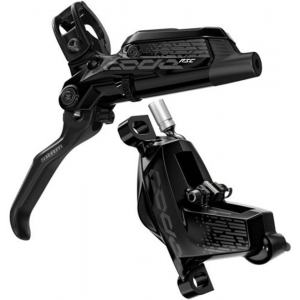
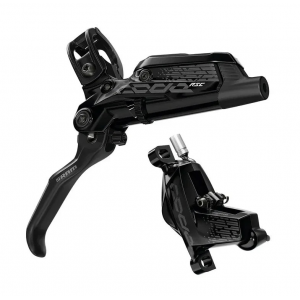
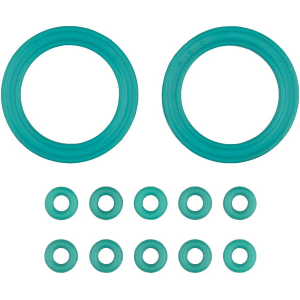
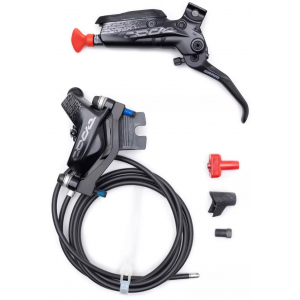

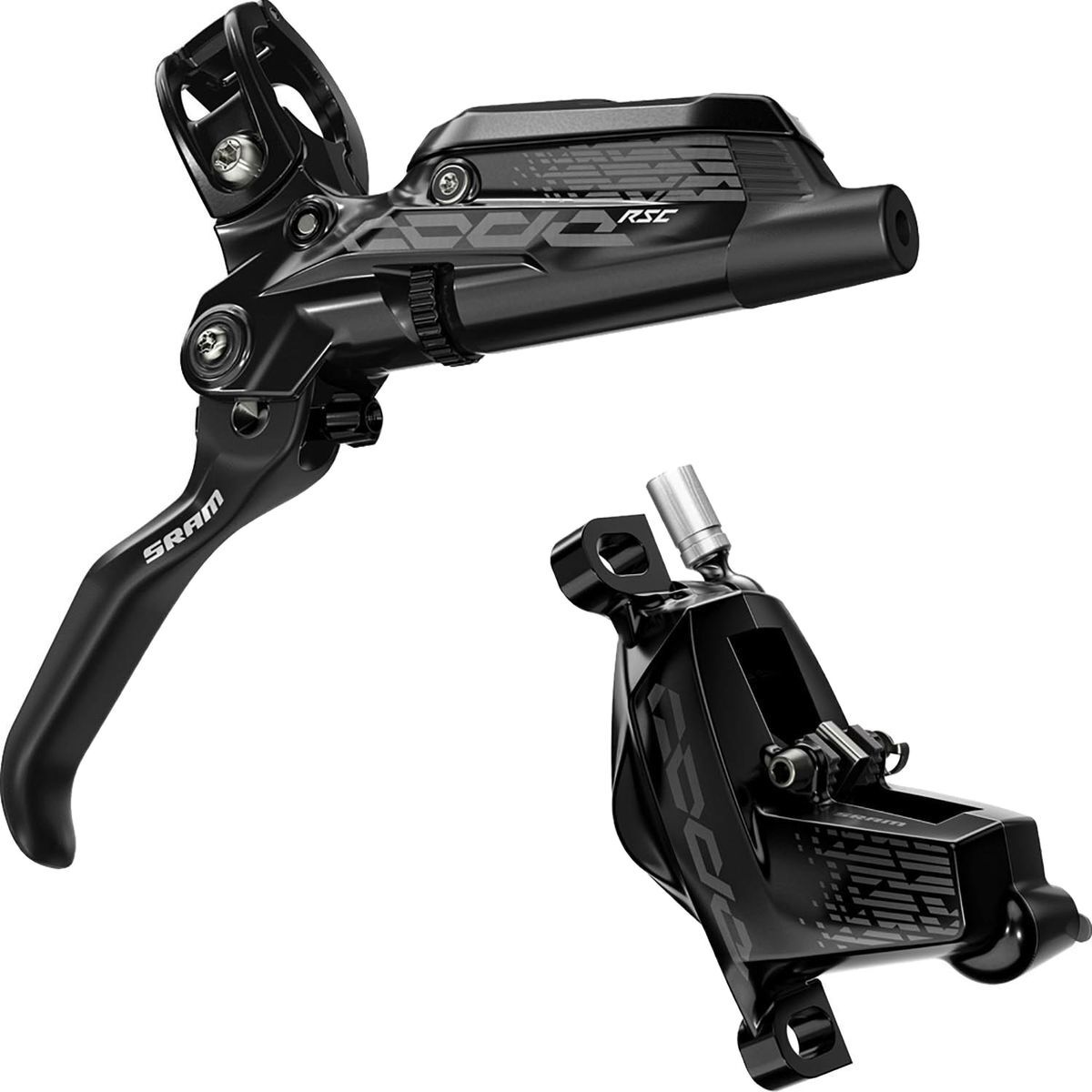
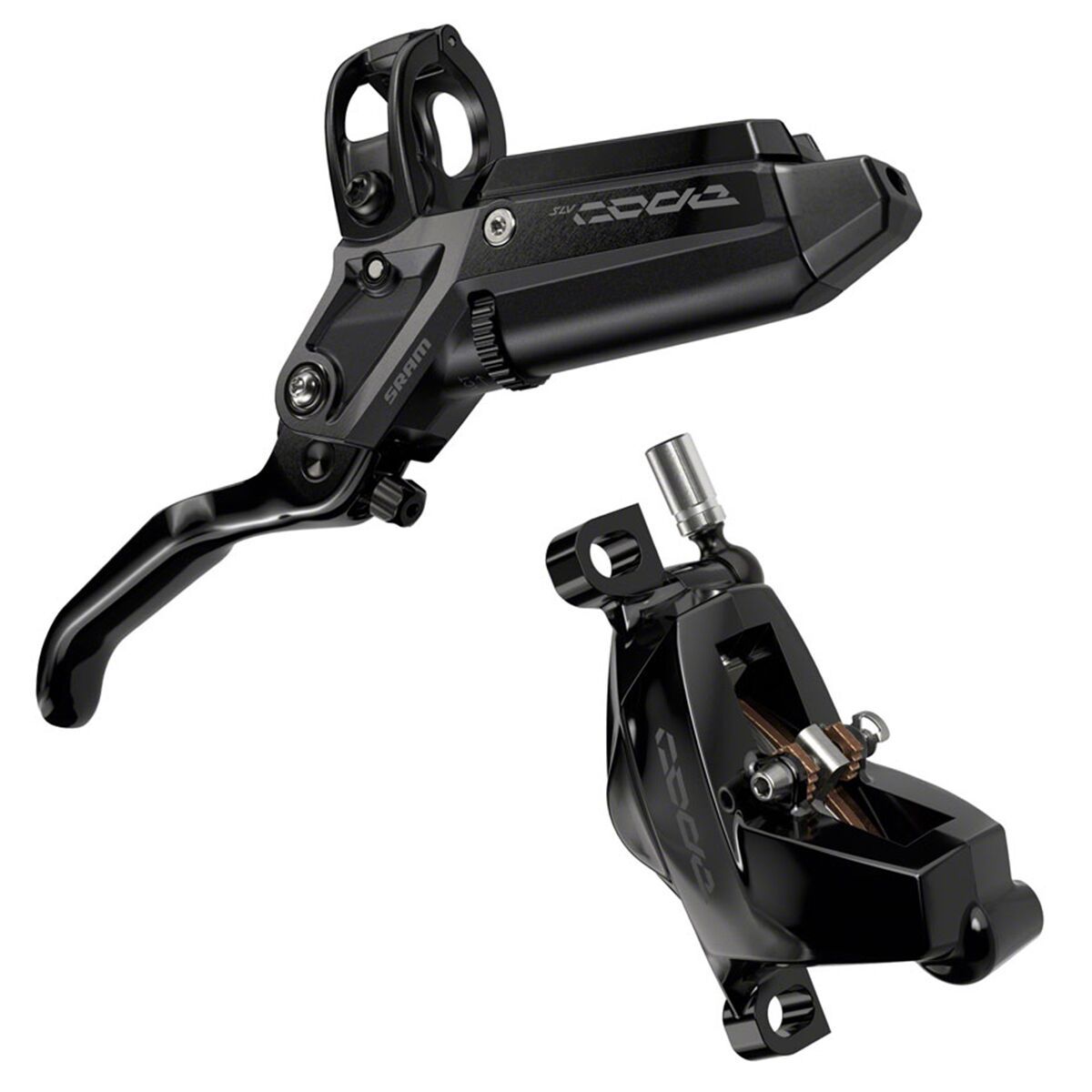
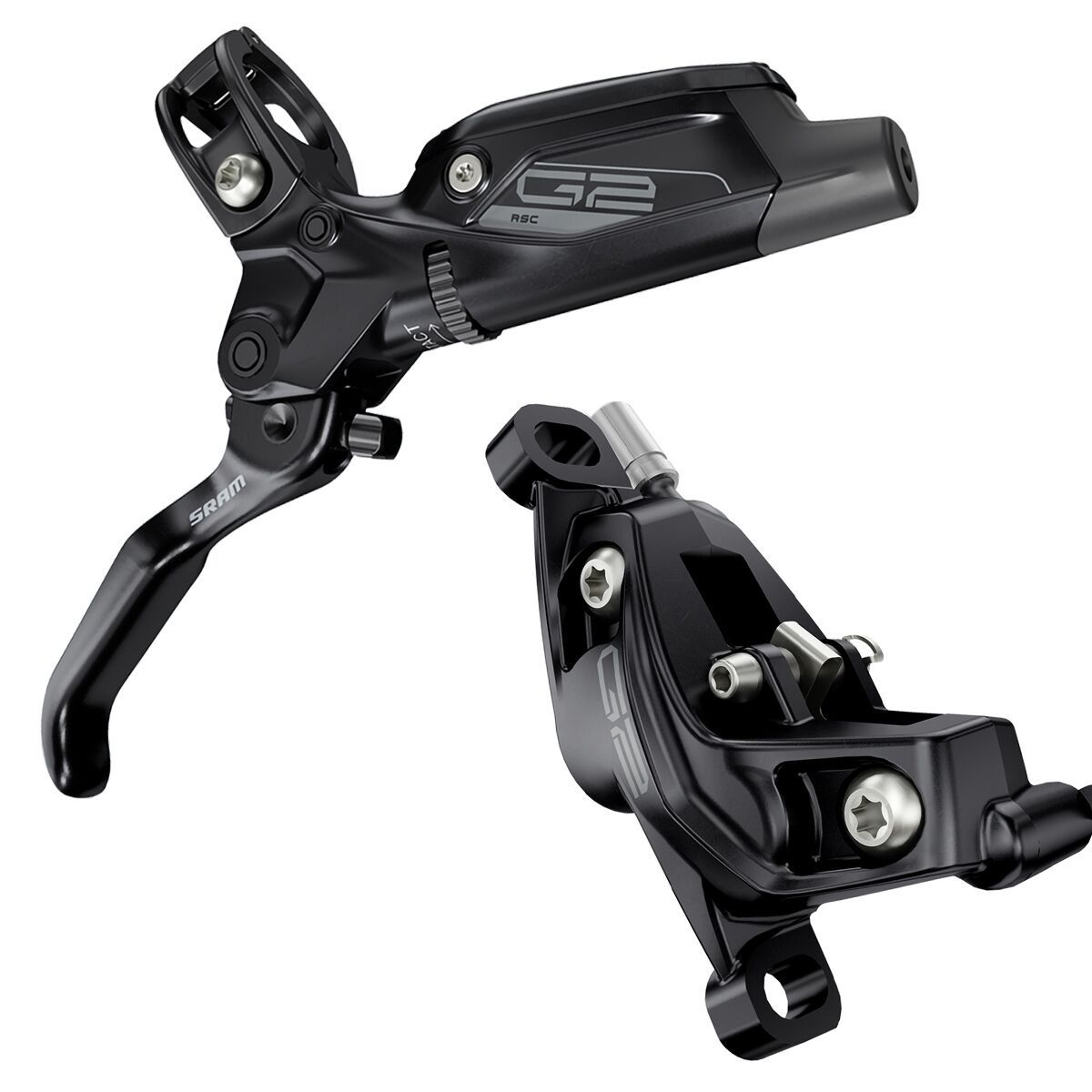







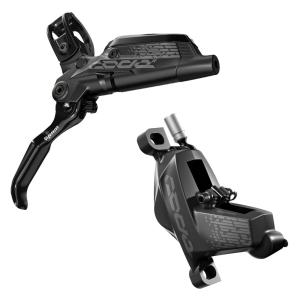
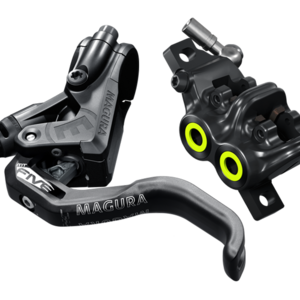
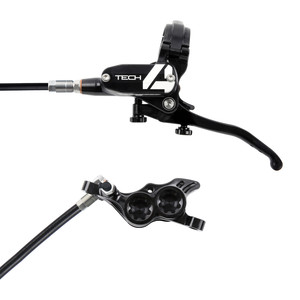

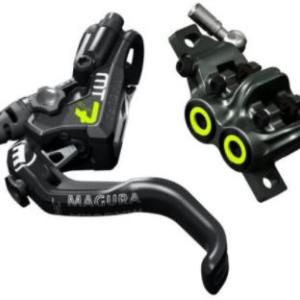











3 comments
Post a reply to: First Ride: SRAM's New Code RSC Brakes